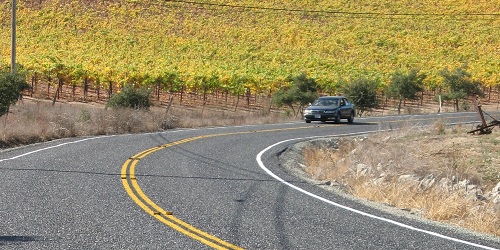Functional Classification

Functional Classification
Public roads are categorized by the State of California (Caltrans) using an official system, referred to as "Functional Classification." Designed by the US Federal Highways Administration, the system of Functional Classification allows streets and highways to be classified according to critical factors such as traffic volume, physical characteristics, and intended usage.
Arterials
Interstates
- Interstates are the highest classification of Arterials and were designed and constructed with mobility and long-distance travel in mind.
- Since their inception in the 1950’s, the Interstate System has provided a superior network of limited access, divided highways offering high levels of mobility while linking the major urban areas of the United States.
- Although Interstates are found extensively throughout the greater Bay Area, none currently reside within Sonoma County.
Other Freeways & Expressways
- Very similar in structure and design to Interstates, but not intended for nation-wide connectivity.
- Includes directional travel lanes that are usually separated by some type of physical barrier.
- Access and egress points are limited to on- and off-ramp locations or a very limited number of at-grade intersections.
- Like Interstates, these roadways are designed and constructed to maximize their mobility function, and abutting land uses are not directly served by them.
- The predominant freeways in Sonoma County with this classification are US Highway 101 and State Highway 12 (within Santa Rosa). Neither of these, however, are part of the County-maintained road system.
Other Principal Arterials (OPA)
- Serve major centers of metropolitan areas, provide a high degree of mobility and can also provide mobility through rural areas.
- Unlike their access-controlled counterparts, abutting land uses can be served directly. Forms of access for Other Principal Arterial roadways include driveways to specific parcels and at-grade intersections with other roadways.
- Unlike Interstates and Other Freeways & Expressways, there are usually multiple Arterial routes serving a particular urban area, radiating out from the urban center to serve the surrounding region. In contrast, an expanse of a rural area of equal size would be served by a single Arterial.
Minor Arterials (MiA)
- Provide service for trips of moderate length, serving geographic areas that are smaller than their higher Arterial counterparts and offer connectivity to the higher Arterial system.
- In an urban context, Minor Arterials interconnect and augment the higher Arterial system, providing intra-community continuity and may carrying local bus routes.
Collectors
- Function to gather traffic from Local Roads and funnel them to the Arterial network.
- In the rural environment, Collectors generally serve intra-county travel (rather than statewide) and constitute those routes on which (independent of traffic volume) predominant travel distances are shorter than on Arterial routes. Consequently, more moderate speeds may be posted.
- Collectors are divided between two categories: Major Collectors (MaC) and Minor Collectors (MiC).
Major Collectors
Generally, Major Collector routes are longer in length, have lower connecting driveway densities, have higher speed limits, are spaced at greater intervals, have higher annual average traffic volumes, and may have more travel lanes than their Minor Collector counterparts. Major Collectors are eligible to receive federal funding for improvements and rehabilitation.
Minor Collectors
Generally, Minor Collector routes are shorter in length, have higher connecting driveway densities, have lower speed limits, are spaced at lower intervals, have lower annual average traffic volumes, and may have fewer travel lanes than their Major Collector counterparts. Minor Collectors are not eligible to receive federal funding for improvement or rehabilitation projects.
Local Roads
- Account for the largest percentage of all roadways in terms of mileage.
- Not intended for use in long distance travel, except at the origin or destination end of the trip, due to their provision of direct access to abutting land.
- Often designed to discourage through traffic.
- As public roads, should be accessible for public use throughout the year.
- Bus routes usually do not run on Local Roads
Public roads are categorized by the State of California (Caltrans) using an official system, referred to as "Functional Classification." Designed by the US Federal Highways Administration, the system of Functional Classification allows streets and highways to be classified according to critical factors such as traffic volume, physical characteristics, and intended usage.
View/Download listing of County roads by functional class (PDF)
 Translate
Translate